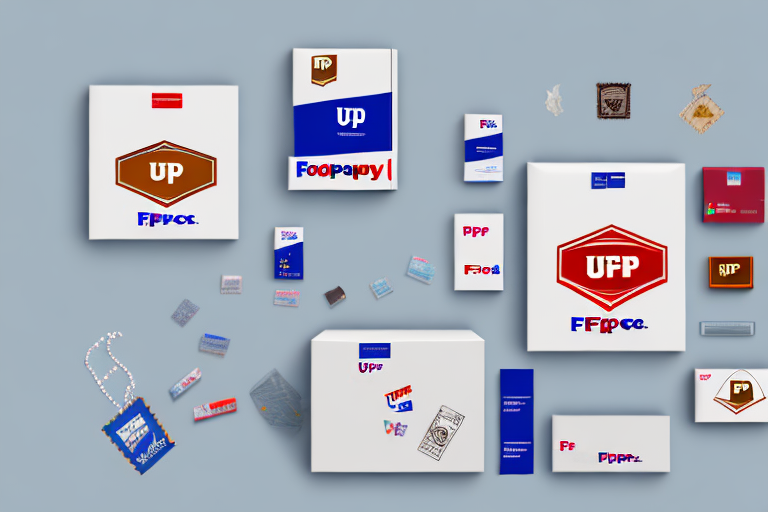Understanding FedEx Shipping Paper Rates
In today’s fast-paced business environment, shipping is a critical component of the supply chain. When shipping with FedEx, one of the most important factors to consider is the shipping paper rates. This article delves into what shipping paper rates are, how to calculate them, the factors that influence them, different types of rates, and tips to save and negotiate better rates. Additionally, we will discuss common mistakes to avoid when selecting shipping paper rates, the importance of reviewing contract fine print, and strategies to manage and track these rates effectively. Finally, we will compare FedEx shipping paper rates with other carriers to help you make informed decisions.
What Are Shipping Paper Rates?
Shipping paper rates, also known as document preparation fees, are charges that FedEx imposes for handling shipments that require the carrier to complete customs or other regulatory documents on behalf of the shipper. These fees vary based on the type of document and the countries of origin and destination for the shipment.
It's important to note that shipping paper rates are not included in the standard shipping fees charged by FedEx. These fees are additional and can significantly increase the cost of shipping, especially for international shipments or those requiring special documentation.
However, some customers may be eligible for exemptions or discounts on shipping paper rates based on their shipping volume or other factors. It is recommended that customers consult with their FedEx account representative to determine if they qualify for any discounts or exemptions on shipping paper rates.
Importance of Shipping Paper Rates for Your Business
For businesses that frequently ship internationally or handle regulated shipments such as hazardous goods, shipping paper rates can significantly impact the bottom line. High shipping paper rates lead to increased shipping expenses, which can erode profit margins. Therefore, understanding and managing these rates is crucial for businesses aiming to optimize their shipping costs.
- Cost Management: Effective management of shipping paper rates helps in controlling overall shipping expenses.
- Profit Margins: Lower shipping costs contribute to healthier profit margins.
- Competitive Pricing: Optimizing shipping costs allows businesses to offer more competitive pricing to customers.
One way to manage shipping paper rates is to negotiate with carriers for better rates by leveraging shipment volume or establishing long-term relationships. Additionally, utilizing technology to compare rates from different carriers and selecting the most cost-effective option can result in significant savings. Staying informed about changes in shipping regulations is also essential to avoid unexpected expenses and maintain profitability.
How to Calculate Shipping Paper Rates for FedEx
Shipping paper rates are calculated based on the type of document required for a specific shipment. FedEx provides a rate database that assists in calculating the shipping paper rate for a given shipment. By inputting relevant information and selecting the appropriate document type, shippers can obtain an estimate of the associated fees.
The shipping paper rate may vary depending on the destination and the weight of the shipment. Additionally, FedEx offers discounts for customers who frequently ship large volumes of packages. To take advantage of these discounts, customers can enroll in the FedEx Advantage Program, which provides discounted rates on shipping services and other benefits.
Factors Affecting FedEx Shipping Paper Rates
Several factors can impact shipping paper rates, including:
- Destination and Origin Countries: Different countries have varying regulatory requirements and document needs.
- Shipment Value: Higher-value shipments may require additional documentation and higher fees.
- Type of Goods: Certain goods, such as hazardous materials, necessitate special documentation.
- Destination and Origination Ports: Different ports may have specific documentation requirements.
- Mode of Transportation: Shipping via air freight typically incurs higher shipping paper rates compared to ground transportation.
- Seasonality: Peak shipping seasons may result in higher rates due to increased demand.
- Regulatory Changes: Updates in customs or hazardous materials regulations can affect shipping paper rates.
Understanding these factors is essential for accurately anticipating shipping paper rates and making informed shipping decisions.
Understanding the Different Types of FedEx Shipping Paper Rates
FedEx offers several types of shipping paper rates, each corresponding to different documentation requirements:
- Customs Clearance Fee: Applies to shipments that require customs clearance, facilitating international transportation.
- Additional Documentation Fee: Charged for shipments that require documents beyond a typical commercial invoice.
- Dangerous Goods Fee: Applies to shipments containing hazardous materials, covering additional handling and documentation.
- Special Handling Fee: Imposed on shipments that require extra care or attention, such as fragile or oversized items.
Each fee ensures that shipments are handled in compliance with regulations and delivered safely and efficiently.
How to Save Money on FedEx Shipping Paper Rates
Saving money on FedEx shipping paper rates is achievable through several strategies:
- Negotiate Rates: Work with FedEx to negotiate better rates based on your shipping volume and loyalty.
- Optimize Shipment Processes: Consolidate multiple shipments into a single shipment to reduce the number of required documents and fees.
- Use Online Shipping Tools: Utilize FedEx’s online tools and shipping software to compare rates and select the most cost-effective options.
- Lightweight Packaging: Use lightweight materials and minimize the overall weight of shipments to lower fees.
- Flat-Rate Shipping: Consider flat-rate shipping options for heavier shipments, which can be more cost-effective.
Implementing these strategies can lead to significant cost savings over time.
Tips for Negotiating Better FedEx Shipping Paper Rates
When negotiating shipping paper rates with FedEx, consider the following tips:
- Understand Your Needs: Clearly define your shipment requirements and the factors driving your shipping paper rates.
- Leverage Shipment Volume: Use your shipping volume as leverage to negotiate better rates.
- Build Relationships: Establish long-term relationships with FedEx representatives to facilitate better negotiation terms.
- Be Transparent: Present your shipping data and needs transparently to negotiate from a position of knowledge.
- Review Contract Terms: Ensure you fully understand the terms and conditions before signing any agreements.
Additionally, consider the level of service you require. Opting for standard services without additional features like expedited delivery or extra insurance can help in negotiating lower rates.
Common Mistakes to Avoid While Choosing FedEx Shipping Paper Rates
Avoiding common mistakes can help in managing shipping paper rates effectively:
- Lack of Understanding: Not fully understanding how factors like destination country, shipment weight, and goods type impact rates.
- Carrier Comparison: Failing to compare shipping paper rates across different carriers, leading to higher expenses.
- Incorrect Paper Size: Choosing the wrong shipping paper size can result in additional fees and delivery delays.
- Poor Labeling: Improperly labeled packages can lead to delays and extra fees due to misrouting or compliance issues.
By being aware of these common pitfalls, businesses can make more informed decisions and reduce unnecessary shipping costs.
Understanding the Fine Print in Your FedEx Shipping Paper Rate Contract
Reading and understanding the contract before signing up for shipping paper rates with FedEx is crucial. The contract outlines the carrier’s conditions, charges, and responsibilities. Key areas to focus on include:
- Liability and Insurance: Understand the extent of FedEx’s liability and the insurance coverage provided for shipments.
- Pricing Structure: Familiarize yourself with the pricing options, including flat rates, weight-based rates, and dimensional weight rates.
- Surcharges and Additional Fees: Be aware of any potential surcharges, such as fuel surcharges or residential delivery fees.
- Dispute Resolution: Understand the procedures for handling disputes or discrepancies in billing.
By thoroughly reviewing these aspects, businesses can avoid unexpected costs and ensure that the shipping terms align with their operational needs.
How to Track and Manage Your FedEx Shipping Paper Rates
FedEx offers several tools and services to help businesses track and manage their shipping paper rates effectively:
- Online Shipping Platform: Allows businesses to create and manage shipments, print shipping labels, and track packages in real-time.
- Mobile App: Provides on-the-go tracking and real-time updates on delivery status, available for both iOS and Android devices.
- Analytics and Reporting: Generates reports to help businesses analyze shipping patterns and optimize their shipping processes.
- Address Validation: Ensures that shipment addresses are accurate, reducing delays and additional fees.
- Package Pickup Scheduling: Streamlines the shipping process by allowing businesses to schedule package pickups at their convenience.
Utilizing these tools can help businesses maintain better control over their shipping processes and costs.
Comparison of FedEx Shipping Paper Rates with Other Carriers
Comparing shipping paper rates across different carriers is essential for making informed shipping decisions. While FedEx offers competitive rates for certain shipments, other carriers like UPS, DHL, and USPS may provide more advantageous rates for different types of shipments. Factors to consider when comparing include:
- Rate Structures: Different carriers have varying rate structures based on weight, dimensions, and destination.
- Service Levels: Assess the reliability, speed, and level of customer service each carrier provides.
- Additional Fees: Consider any surcharges or additional fees that may apply beyond the base shipping rates.
- Technology Integration: Evaluate the ease of integrating the carrier’s shipping tools and platforms with your existing systems.
Conducting thorough research and comparing rates and services will help businesses optimize their shipping costs while maintaining service quality.
In conclusion, shipping paper rates play a crucial role in the success of businesses that ship internationally or handle regulated shipments. Understanding how FedEx shipping paper rates are calculated, the factors that affect them, and how to manage and negotiate these rates can help businesses optimize their shipping processes and reduce expenses. Additionally, comparing rates across different carriers enables businesses to make informed decisions that enhance profitability while ensuring reliable and compliant shipping practices.
It is also important to consider the level of service provided by different carriers when comparing shipping paper rates. While some carriers may offer lower rates, they may not provide the same level of reliability, speed, or customer service as FedEx. Businesses should weigh the cost savings against the potential risks and benefits of using different carriers for their shipments.








